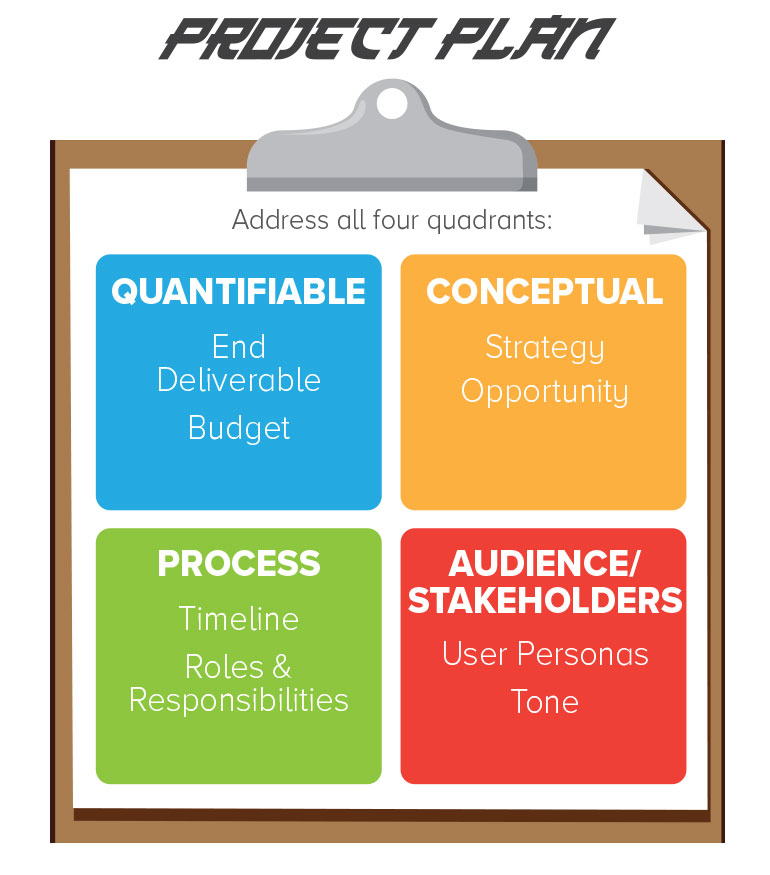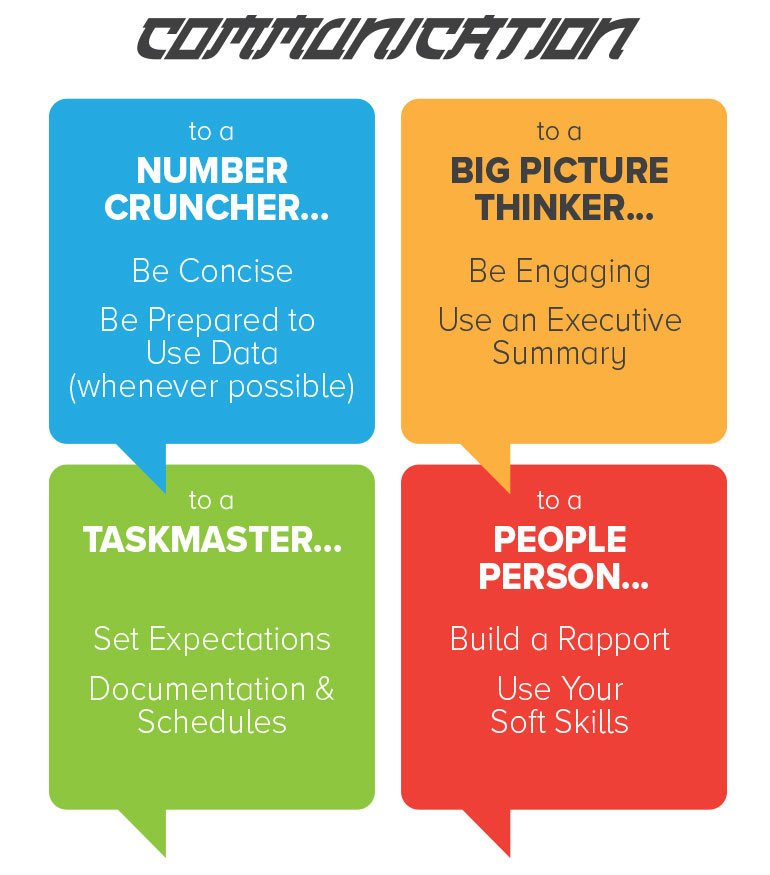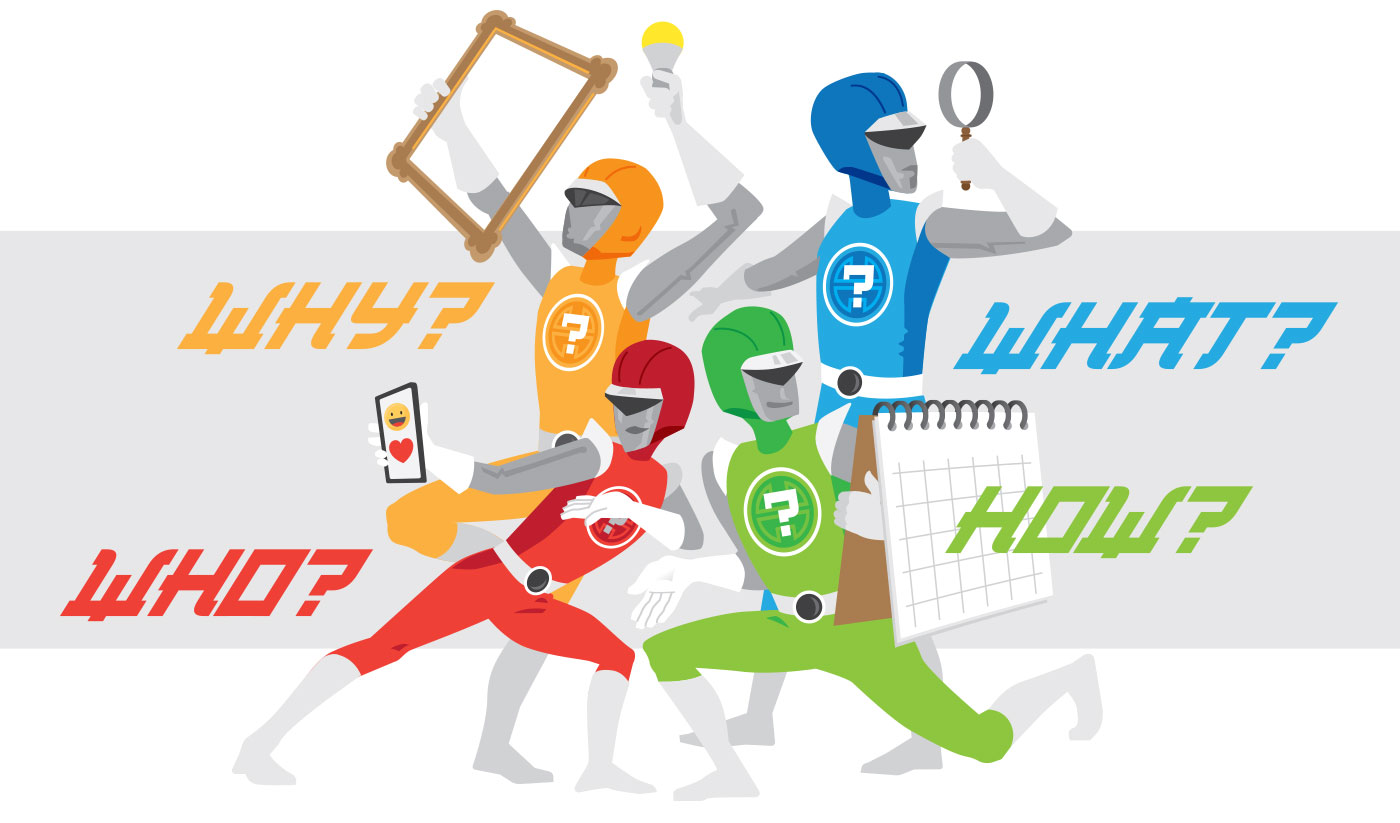Here is a helpful exercise to consider when you’re starting work with a new client or colleague. Define their personal priorities based on which of these four questions they might focus on first …
WHAT? What will be the end product or result? What will the project cost?
WHY? Why is the job important to the big picture?
HOW? How will we schedule, organize, and streamline the process?
WHO? Who will be affected by the project? Who do we hope to impress?
When a decision-maker thoughtfully approaches a new bit of work, they will usually ask each one of these questions. But at the same time, each of us tends to favor one of the four aspects of decision-making over the others. We all know the ‘What’ person in our office—the person who sticks to the facts, watches the budget like a hawk, and is an ace at spreadsheets. We also know the ‘Who’ person—the person who will chat you up for fifteen minutes about kids or co-workers—the person who keeps track of birthdays and can read the temperature of the room like an infrared thermometer.
Every team has these different personality types—and they need them because a variety of mindsets and perspectives keeps an organization well-balanced and self-aware.
But sometimes a colleague’s or client’s preferred decision-making style doesn’t mesh well with the type of project they’re heading—or the people they’re leading. A person who prefers to focus on optimizing workflows might end up in charge of a ‘touchy feely’ social media campaign. Or a ‘blue-sky’ thinker might manage a project where a tight deadline and a tighter budget are the two dominant factors. If you have identified a disconnect like this, it’s important to follow a few tips to help bridge that divide.

 Tip 1:
Tip 1:
As quickly as possible, get the decision-maker(s) to define a consensus understanding of the objective of the Big Goal. And fill out a Creative Brief or Project Plan. The main goal of this document is to formalize your four key parameters (What, Why, How, Who):
WHAT: The Quantifiable (End deliverable or service. Budget.)
WHY: The Conceptual: (Strategy. Opportunities.)
HOW: The Process: (Timeline. Roles & responsibilities.)
WHO: The Audience/Stakeholders: (User Personas. Tone.)
Tip 2:
A little understanding can go a long way. Listen, and Acknowledge other points of view. You might not be able to convince a WHAT person of the less quantifiable benefits of a branding initiative if they’re fixated on the bottom line. But if you verbally recognize their concerns, you can take one step closer to bridging a disconnect. Try to formulate a thoughtful and respectful response to any objections. And repeat those concerns in future interactions to help form a sense of mutual awareness and appreciation.
 Tip 3:
Tip 3:
Take into account different thinking styles and Communicate accordingly:
With a WHAT person: Be brief, specific, and concise. Use data when accessible. Don’t use too much small talk.
With a WHY person: Don’t lose their interest. Use an ’executive summary’ mindset. Be engaging and fast-paced.
With a HOW person: Set expectations and do not miss them. Documentation. Schedules.
With a WHO person: A rapport is essential. Be thoughtful and considerate to everyone in the room. Watch your non-verbal communication.
Hopefully, those will help! Remember, open communication and collaboration with a variety of different thinking styles can have a dramatic effect on the end results of a project. It can lead to unexpected solutions—and it can make us all more well-rounded people!

